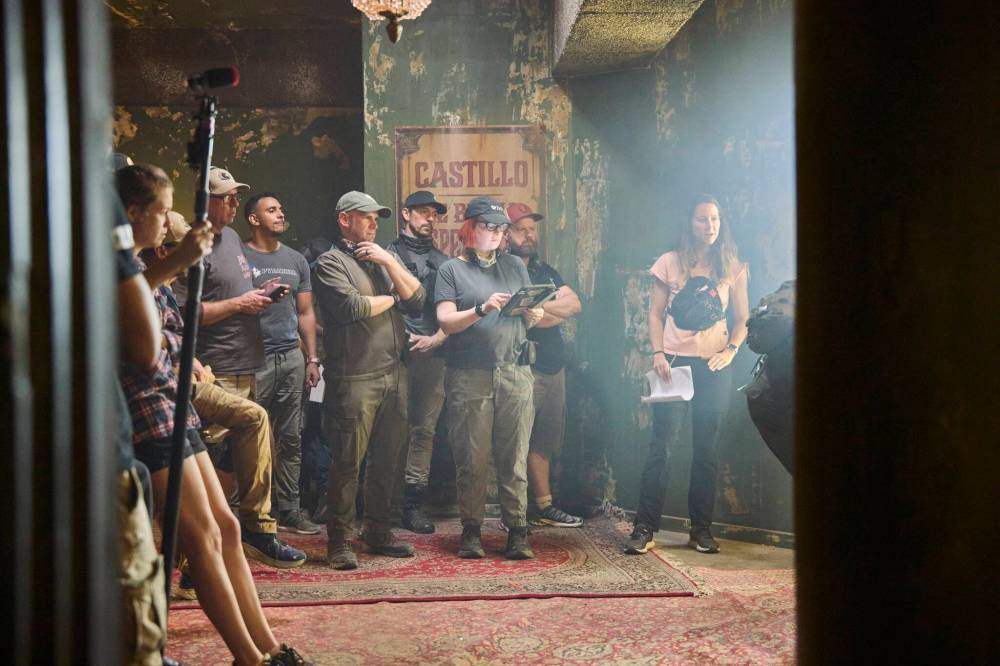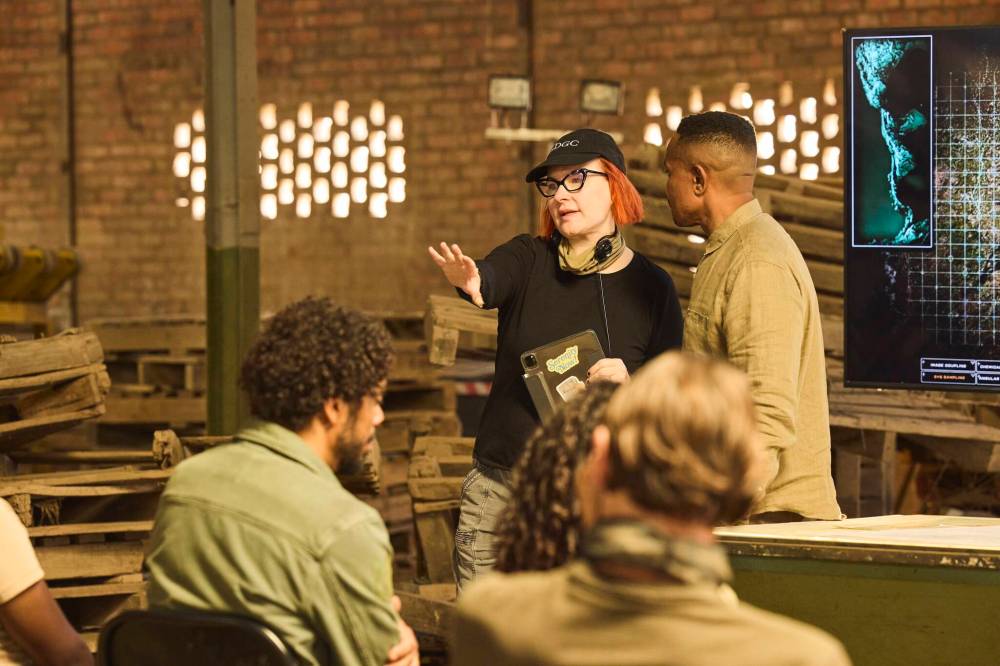Piece of the action
Local director gets her shot at working on Sniper franchise
Advertisement
Read this article for free:
or
Already have an account? Log in here »
To continue reading, please subscribe:
Monthly Digital Subscription
$1 per week for 24 weeks*
- Enjoy unlimited reading on winnipegfreepress.com
- Read the E-Edition, our digital replica newspaper
- Access News Break, our award-winning app
- Play interactive puzzles
*Billed as $4.00 plus GST every four weeks. After 24 weeks, price increases to the regular rate of $19.00 plus GST every four weeks. Offer available to new and qualified returning subscribers only. Cancel any time.
Monthly Digital Subscription
$4.75/week*
- Enjoy unlimited reading on winnipegfreepress.com
- Read the E-Edition, our digital replica newspaper
- Access News Break, our award-winning app
- Play interactive puzzles
*Billed as $19 plus GST every four weeks. Cancel any time.
To continue reading, please subscribe:
Add Free Press access to your Brandon Sun subscription for only an additional
$1 for the first 4 weeks*
*Your next subscription payment will increase by $1.00 and you will be charged $16.99 plus GST for four weeks. After four weeks, your payment will increase to $23.99 plus GST every four weeks.
Read unlimited articles for free today:
or
Already have an account? Log in here »
Hey there, time traveller!
This article was published 18/02/2025 (246 days ago), so information in it may no longer be current.
In Sniper: The Last Stand, Sgt. Brandon Beckett’s latest attempt to save humanity is Danishka Esterhazy’s first foray into action flicks.
The Winnipeg-born filmmaker is also the first female director of the long-running Sniper franchise, which launched in 1993 and now counts 11 movies following marine sniper Beckett (and, previously, his dad Tom) on high-stakes missions of global importance.
“I’ve always been a huge action fan and I always wanted to make those films, but I had a really hard time getting traction and getting those opportunities,” Esterhazy says over Zoom from Los Angeles.
Her interest in the high-octane genre was piqued as a kid watching James Bond movies with her dad. But when Esterhazy was getting started in the early 2000s after graduating from the Canadian Film Centre, female action fans were often left out of the equation.
“A lot of producers were saying women don’t watch genre films, women don’t like horror, they don’t like science fiction, which is completely untrue — those producers had clearly never been to a Comic-Con,” she says.
Esterhazy has since built an award-winning career directing indie horror movies, television thrillers and sci-fi series, including Black Field (2009), The Banana Splits Movie (2019) and I Was Lorena Bobbitt (2020).
She is currently filming an online-dating horror movie called Match for Tubi.
The opportunity to get involved in the Sniper franchise came after its catalogue was released on Netflix, leading to renewed viewer interest in the series.
Production studio Sony Pictures decided to pursue an 11th instalment, but with a retooled storyline. Esterhazy proved an ideal directorial fit.
“A lot of the recent ones have had sort of a comedic undertone,” she says, recalling her interview with the producers.
“I came in as an action fan and said, ‘You know, I love this franchise, I love these films, but I really wish that the tone would go back to the earlier movies.’ And they were like, ‘That’s just what we want.’”

MARCOS CRUZ PHOTO
Danishka Esterhazy (centre) ups the sense of risk and cranks up the battle scenes in the 11th film of the Sniper franchise.
Her goal for Sniper: The Last Stand was to increase the grit, up the action and focus on Beckett (played by Chad Michael Collins), who has been tasked with leading a special ops mission to stop an arms dealer from unleashing a deadly weapon on the world.
While Esterhazy was excited to apply her vision, it was important to avoid alienating Sniper’s established fan base — a balancing act she had prior experience with as director of the 2021 reboot of the 1980s cult classic Slumber Party Massacre.
“I wanted to honour the characters, honour the actors who’ve been part of this franchise for years and years, bring in the same kinds of scenes and elements that the fans love, just with a higher sense of risk and bigger battles,” says the director, who splits her time between Toronto and L.A.
Esterhazy included plenty of “kick-ass women” throughout the narrative, both as military heroes and enemy militia, and leaned into practical rather than visual effects, a common theme of her horror work.
“I’m not anti-VFX, but I feel we rely on VFX too much in modern films. Practical effects are more satisfying for the audience,” she says.
In Last Stand, that translated to lots of fake blood, prosthetics, explosions and gun work. Over four months of filming in South Africa in early 2024, the cast shot more than 3,000 rounds of blanks.
While there were calls to ban the use of guns on movie sets in the wake of the accidental shooting death of cinematographer Halyna Hutchins by Alec Baldwin during the filming of Rust in 2021, Esterhazy — who learned the ropes from local firearms safety co-ordinator Dave Brown — says they’re just another prop when used correctly.
“I read about how they were behaving with guns on set and I was completely shocked,” she says of the Rust tragedy.

MARCOS CRUZ PHOTO
Danishka Esterhazy is best known for directing indie horror movies.
“We had guns everywhere, we had hundreds of extras with guns, but we had a massive team of armourers to keep everyone safe and to manage the guns so there was no misbehaviour on set and no one was put at risk.”
Last Stand is available on Apple TV+ and the director hopes the release inspires other female filmmakers to follow their passion for action.
“I hope there’ll be fewer situations where we’re underestimated,” Esterhazy says.
eva.wasney@winnipegfreepress.com

Eva Wasney has been a reporter with the Free Press Arts & Life department since 2019. Read more about Eva.
Every piece of reporting Eva produces is reviewed by an editing team before it is posted online or published in print — part of the Free Press‘s tradition, since 1872, of producing reliable independent journalism. Read more about Free Press’s history and mandate, and learn how our newsroom operates.
Our newsroom depends on a growing audience of readers to power our journalism. If you are not a paid reader, please consider becoming a subscriber.
Our newsroom depends on its audience of readers to power our journalism. Thank you for your support.



